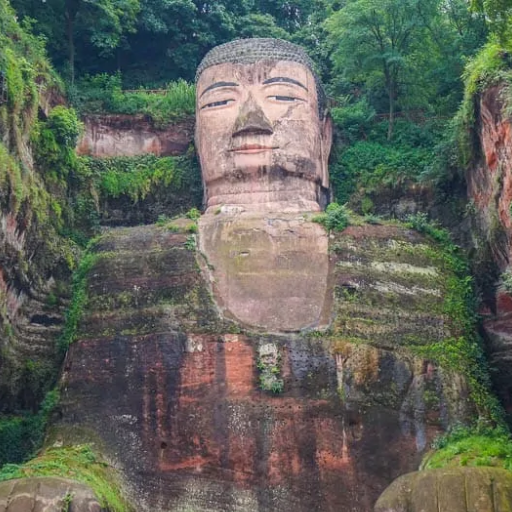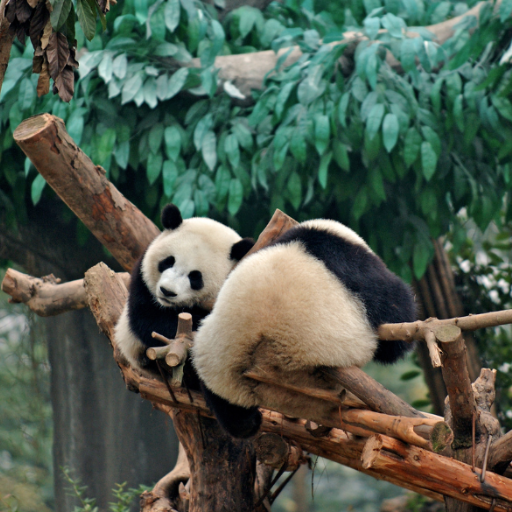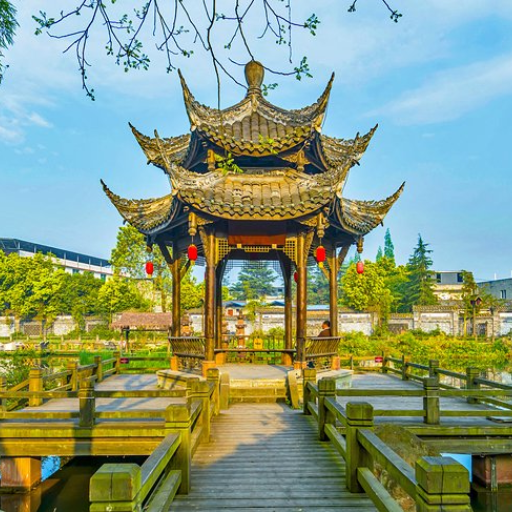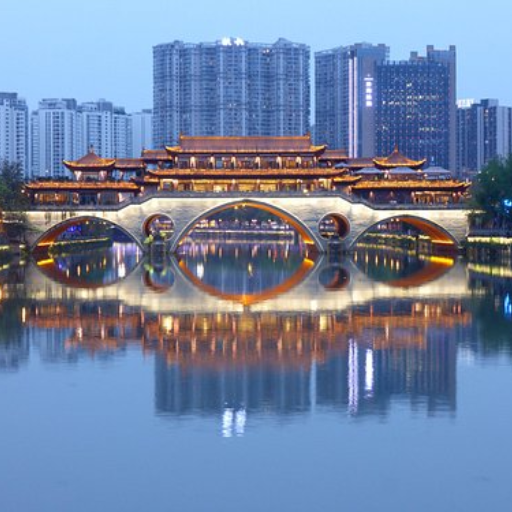With its rich culture and history, Chengdu, the capital of Sichuan Province, is a breathtaking city. Furthermore, it is home to the Giant Pandas of China. Chengdu is a perfect blend of technology and ancient culture. This blog will inform you about the unparalleled culinary experiences as well as the heritage and places you can explore in Chengdu through the top 15 places, which, when visited, will be nothing short of a dream. This guide will help you if you are looking for a complete immersion in Sichuan operas, or if you want to take a hotpot dipped in tradition, Chengdu has it all. So, let’s explore the marvels of this wondrous place together.Discover the Best Things to Do in Chengdu.
What are the top Chengdu things to do Attractions?

In Chengdu, the Chengdu Research Base of Giant Panda Breeding is at the top of the list of places to see for anyone, in my opinion. Next staffed with modern amenities, complete with accommodation and recreational areas, Jinli Ancient Street should not be missed and is ideal for fans of traditional and ancient culture. The breathtaking Giant Leshan Buddha is the final spot for all tourists across the globe. Located within UNESCO World Heritage sites, it holds the title of the largest stone Buddha in the world.
Explore the Chengdu Panda Base
The Chengdu Panda Base offers a premier opportunity for people who are interested in wildlife conservation. This Specialized Facility concentrates on the breeding and conservation of giant pandas, one of the world’s most endangered species. Visitors will appreciate observing wonderful panda spectacles-in-harmonious-action from all ages, energetic and playful cubs, adults leisurely chewing bamboo, and all in-between.
Frequently asked questions:
- What is the most suitable time to visit the Chengdu Panda Base?
The most suitable time to visit is in the morning from 8 am to 10 am because the pandas are active and feeding.
- For how long do I need to set aside time when visiting?
Allocate 2-3 hours if you want to tour the entire facility and enjoy watching the pandas.
- Is there relevant infrastructure available for the visitors?
Yes, the base has educational centers, a panda museum, as well as other infrastructure like cafeterias and rest areas.
Technical Parameters for Conservation:
- Bamboo eaten by an adult panda per day: 20-40 kg (44-88 lbs).
- Recommended room temperature for pandas: 18-24 degrees Celsius (64-75 degrees Fahrenheit)
- The average breeding success rate at the base (latest): ≈ 80%.
These details and insights render the visit exciting and educational at one of the most loved places in Chengdu.
Visit the Leshan Giant Buddha
The colossal statue of Leshan Giant Buddha, which is a UNESCO World Heritage Site, is carved into a cliff that has a breathtaking view of the merging of the Min, Dadu, and Qingyi rivers. It was built during the Tang dynasty between 713 and 803 AD, and is the highest statue in the world at 71 meters or 233 feet tall, even before modern society. The Giant Buddha is built in the likeness of Maitreya, who is known to be the Buddha of joy and prosperity. Shanfou is said to be able to subdue the waters that threaten the joya boat passage through the rivers.
- Technical Construction Limitations:
- Statue height: 71 meters, 233 feet.
- Shoulder width: 28 meters, 92 feet.
- Head height: 14.7 meters (48 feet) 14.7m.
- Carved hair buns: 1021 carved hair buns.
- Repair and Preservation:
- Cleaning at regular intervals and removal of plants that can lead to damage.
- Surface treatment to prevent degradation from moisture and environmental elements.
Guests have the option to either board a boat and view the statue from afar or climb the stairs to get a more intimate view. The combination of natural beauty and the intricate human made artifact is overwhelming and stays with all witnesses for a long time.
Why You Shouldn’t Miss the Chengdu Panda Base

Here, one can enjoy unique regions such as the Chengdu Panda Base, which specializes in the preservation and breeding of one of nature’s most cherished animals, the panda. Chengdu Panda Base features gentle pandas, ranging from exuberant cubs to stately adults, with the entire base designed to mimic their characteristic dwelling. In addition to capturing the attention of every tourist, Chengdu Panda Base features informative exhibits on the behavioral patterns, dietary needs, and sociocultural dynamics of modern-day pandas. Panda Chengdu Base is undoubtedly and inarguably entertaining; however, the vast wealth of knowledge on offer guarantees that every visitor, regardless of age, leaves with indelible memories.
Experience the Research Base of Giant Panda Breeding
The excursion to Chengdu’s Research Base of Giant Panda Breeding was remarkable. The habitats were exceptionally maintained and effortless to use, providing comfort and health to the pandas whilst ensuring they were living in an environment that was imitative of nature. Watching the adorable pandas eat and enjoy their fresh bamboo, alongside playful interactions between lively cubs, was just amazing. The facility also emphasizes vital efforts to conserve these species and the science, as well as care behind the breeding programs. The temperature within the indoor enclosures is controlled to a range of 18 – 22 degrees Celsius, which is ideal for their well-being. Most of the animals’ diet is composed of fresh bamboo, which is prepared and monitored closely to maintain their diet’s nutritional balance. This trip gave me the chance to observe these charming creatures at close range, but more importantly, it enhanced my understanding of the efforts being taken to save their future.
Learn About the Giant Pandas
That Giant Pandas were once critically endangered but now are considered a success story, native to the mountain ranges of central China, due to effective strategies like habitat restoration and breeding programs. In the wild, their population continues to increase. They primarily eat bamboo despite being classified as carnivores, and they greatly aid the ecosystem by dispersing seeds and helping forests grow.
Best Time to Visit the Panda Base
The Panda Base is best visited in the early spring (March-May) or in the fall (September-November). Not only is the weather milder, but the pandas are more likely to be active, particularly in the morning hours. Additionally, if you’re looking to avoid large groups of people, it’s advisable to visit during the weekdays as they are less busy and provide a calm atmosphere.
How to Experience the Sichuan Opera in Chengdu?

For those who want to see the Sichuan Opera without traveling to the theater district, you can see it at various teahouses in Chengdu. Shufeng Yayun Teahouse and Jinjiang Theater are two of the most popular spots that offer stunning performances which include face-changing, fire-spitting, and masterful storytelling. You should come to the venue well before the show starts so you have time to have traditional snacks and tea. Booking tickets early is recommended so you have better options for seating.
Attend a Sichuan Opera Performance
For optimal enjoyment of Chengdu’s spectacular Sichuan Opera, see the following recommendations:
- Location: Recommended places are the Shufeng Yayun Teahouse or the Jinjiang Theater.
- Booking: It is best to book tickets in advance, either online or at the venue. Make sure to choose shows in the evening, often beginning around 7:30 PM or 8:00 PM.
- Arrival Time: Arrive between 30 to 45 minutes early if you want to enjoy some tea and snacks before the performance.
- Duration: Typical performances last between 1.5 to 2 hours.
- Seating: Front-row seats offer maximum proximity to the performance, but require extra cost. Mid-range tickets are recommended for an optimal viewing point without breaking the bank.
- Additional Tips: It can be helpful to take a camera for memorable moments, but check if photography is allowed prior.
Sichuan Opera is certainly rich in culture, enjoy it with these details in mind!
History of the Sichuan Opera
Sichuan Opera traces its roots to over 300 years, deeply ingrained in the culture of Sichuan province. If I remember correctly, it was formed during the Ming and Qing dynasties when it incorporated singing, dancing, and storytelling. What intrigues me the most is how it incorporates different styles from other regions, resulting in an art form that is extremely diverse yet Sichuanese at the same time. Its most notable feature, face-changing or “bian lian,” perhaps best exemplifies this art form as it represents the swift emotional transformations of the characters. To think how this amazing art has progressed while still keeping its essence for contemporary audiences is astounding.
What Are the Top Day Trips Around Chengdu?

There are multiple day trips one can take from Chengdu, and each of those trips showcases the culture, history, and nature of the region. One famous trip is the day trip to Leshan Giant Buddha, which is not only a UNESCO World Heritage site, but also the world’s largest stone Buddha statue. Other must-visit sites include Mount Qingcheng, which is surrounded by serene forests and ancient temples, and is known as the birthplace of Taoism. In addition, the Chengdu Research Base of Giant Panda Breeding is remarkable and provides a once-in-a-lifetime opportunity to wildlife lovers and people who want to witness Pandas in person. Huanglongxi is another ancient town that showcases traditional architecture and local delicacies. All of these places can be visited conveniently from Chengdu, thus bestowing Chengdu with unparalleled charm.
Explore the Dujiangyan Irrigation System
The UNESCO World Heritage Site of the Dujiangyan Irrigation System is situated on the Minjiang River, Northeast of Chengdu. It’s an exemplary work of Chinese engineering that dates back to the Warring States period around 256 BC. It was constructed using innovative flood control systems, which eliminated the necessity of a dam while still providing a way to sustainably irrigate the region. This system was designed by Li Bing and his son and is the world’s oldest water irrigation system.
Dujiangyan consists of three main parts:
- Yuzui or The Fish Mouth Levee – A separation levee that divides the Minjiang River into two. The inner river collects sediment and waste, while the clean water basin fully releases the irrigation waterways.
- Feishayan or Flying Sand Weir – This structure serves as a spillway which removes sediment and weakens the water current in order to maintain the cleanliness of the river.
- Baopingkou or Bottle-Neck Channel – An artificial canal responsible for controlling the volume of water that flows into the irrigation systems, specially designed to stop overflowing during floods.
Thanks to these engineering feats, the Dujiangyan Irrigation System provides irrigation for more than 668,700 hectares (1.65 million acres) of farmland, servicing tens of millions of people. Its design also protects the area from seasonal floods and serves as a monument to the coexistence of human creativity and nature. Today, it remains a cornerstone of Sichuan’s agricultural development and cultural heritage.
Visit the Mount Qingcheng
Mount Qingcheng also has many serene forests and tranquil landscapes, which makes it one of the most placid and stunning places to visit, in my opinion. On my travels, I found the Mount Qingcheng region to be very peaceful, especially because of the temples such as Jianfu Palace and Shangqing Palace. Chengdu is a fusion of nature, history, and spirituality, making it a must-visit, especially when combined with Qingcheng, which is often recognized as the birthplace of Taoism.